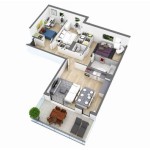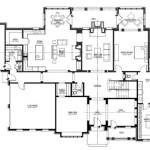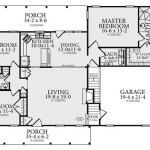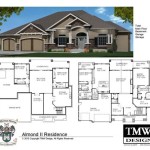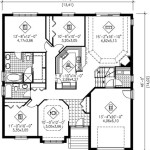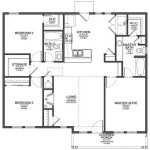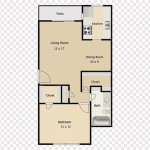Cape Cod Style Floor Plans
Cape Cod style homes, originating in 17th-century New England, are recognized for their practicality, simplicity, and charm. Their floor plans, developed in response to the region's harsh climate, prioritize functionality and efficient use of space. This article examines the characteristic features of Cape Cod floor plans and their variations.
Key Elements of Traditional Cape Cod Floor Plans:
* Symmetrical Facade: The front door is typically centered, often flanked by multi-paned windows. This balanced aesthetic contributes to the style's timeless appeal. * Steeply Pitched Roof: Designed to shed snow and rain effectively, the steep roof also creates usable space in the attic or upper half-story. * Single or One-and-a-Half Stories: Traditionally, Cape Cod homes were single-story structures, later evolving to include a half-story tucked beneath the sloping roof. * Minimal Ornamentation: Exterior details are kept simple, focusing on practicality rather than elaborate embellishments. Shuttered windows and simple door surrounds are common. * Central Chimney: Placement of the chimney in the center of the house maximizes heat distribution throughout the compact floor plan.
Variations in Cape Cod Floor Plans:
While adhering to core characteristics, Cape Cod floor plans evolved to incorporate different layouts and additions. These variations offer greater flexibility and adaptability to changing needs.
Common Cape Cod Variations:
* Full Cape: This classic style features a central front door, flanked by two windows on each side. The interior layout typically includes two rooms on either side of the central hallway on the first floor, with additional bedrooms accommodated in the half-story. * Half Cape: A more compact version, the half Cape has a front door off-center, with two windows on one side and one on the other. The interior reflects this asymmetry, often featuring a smaller layout on one side of the entrance. * Three-Quarter Cape: Bridging the gap between the half and full Cape, this variation features a front door slightly off-center, with two windows on one side and a single window and a small addition, often a shed dormer, on the other. This addition provides more living space than a half Cape but less than a full Cape. * Expanded Cape: As families grew and needed more space, additions were often incorporated into the original Cape Cod design. These additions could include extending the rear of the house, adding dormers to the second floor, or constructing attached garages or wings.
Modern Adaptations of Cape Cod Floor Plans:
While maintaining the charm of the original design, modern Cape Cod floor plans often incorporate contemporary features to meet current lifestyle demands.
Modern Features in Cape Cod Floor Plans:
* Open Floor Plans: Walls separating the traditional living spaces are often removed to create a more open and airy feel. This modernizes the layout while maintaining the classic exterior aesthetic. * Updated Kitchens and Bathrooms: Modern appliances, updated fixtures, and larger layouts are often incorporated into these crucial spaces. * Finished Basements: Utilizing previously unfinished space, finished basements add valuable square footage for recreational rooms, home offices, or additional bedrooms. * Attached Garages: While not a traditional feature, attached garages provide convenient vehicle storage and direct access to the home, a highly sought-after amenity in modern living. * Outdoor Living Spaces: Decks, patios, and porches extend living space outwards, allowing homeowners to enjoy the surrounding landscape.
Considerations for Choosing a Cape Cod Floor Plan:
* Lifestyle Needs: The size and layout should align with the homeowner's individual or family needs. Consider the number of bedrooms, bathrooms, and the desired functionality of common areas. * Lot Size and Orientation: The chosen floor plan should complement the lot's dimensions and orientation to maximize natural light and outdoor space. * Budget: Construction costs can vary depending on the size and complexity of the floor plan. Establish a realistic budget before finalizing the design. * Local Building Codes: Ensure the chosen plan adheres to all local building codes and regulations. Consulting with a local architect or builder is recommended to ensure compliance.
Advantages of Cape Cod Floor Plans:
* Efficient Use of Space: Compact layouts minimize wasted space, making them cost-effective to build and maintain. * Classic Charm and Curb Appeal: The timeless aesthetic of Cape Cod homes adds value and enhances neighborhood appeal. * Adaptability and Expansion Potential: The design readily accommodates additions and modifications, allowing homeowners to adapt the space to evolving needs. * Cozy and Comfortable Atmosphere: The compact layout and traditional features create a warm and inviting atmosphere.

Cape Cod House Plans Find Floor And Designs

Small Cape Cod House Plan With Front Porch 2 Bed 900 Sq Ft

Cape Cod Floor Plans Key Modular Homes

Miscellaneous Houses Ilration And Floor Plans Of A Cape Cod Style House Published In The Star Library Congress

Cape Cod House Style A Free Ez Architect Floor Plan For Windows

Pennwest Homes Cape Cod Style Modular Home Floor Plans Overview Custom Built By Patriot S

Loft Cape Cod Floor Plans Colorado Building Systems

Pin Page

Cape Cod Plan 2 643 Square Feet 4 Bedrooms 5 Bathrooms 110 00641

Cape Cod Style House Plan 1917 Lawndale

